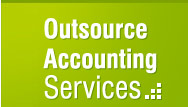





|
Accounting Management means different things to different people. For some, it's just an inventory on an Excel spreadsheet. And for the enlightened, it's an all out monitoring and management process using comprehensive asset accounting management policies and sophisticated AM tools. While inventories are necessary, doing this alone is not the solution. Considering these factors, Asset management can be viewed as a set of well-defined practices and processes governing the acquisition, maintenance, and implementation of IT services.
All assets have their own lifecycles involving managing assets. Many other aspects are to be kept in mind like physical security and purposes served to the end user. Benefits of Asset Accounting Management The benefits associated with AM are direct and indirect. The biggest advantage is that it helps an enterprise keep track and utilize all its assets optimally. This is of great benefit in tracking TCO (Total Cost of Ownership/Operation)and ROI (Return On Investment). It becomes easier to keep track of the capital expenditure and arrive at the ROI which the asset has given over a period of time with the help of proper asset management. Asset Management helps to overhaul an enterprise's infrastructure for better results. One of the basic or rather the biggest advantage of using AM in an enterprise is that it is possible to fine tune and use the existing resources in an intelligent manner. It can be clearly seen that knowing the exact number of computers that are actually being used from the entire inventory helps when doing the next procurement. This also provides direct financial benefits by avoiding loss. "If you do not know the exact number of the equipment that you have, there is a financial loss associated with it. The importance of AM when negotiating with vendors is very critical. CTO/CIOs have to deal with vendors regarding AMCs and service contracts every year. Having an up-to-date inventory of the equipment coming under warranty is very handy during such negotiations-especially in organizations having distributed infrastructure. This is true not just in the case of hardware but also for software. The box story, 'Managing software assets' details the issues related to software assets and how to manage them optimally. Asset accounting management can also help the organization provide resources to users according to their requirement. For example, the requirement of data-entry personnel in the Logistics department will be different from that of the Accounts team.
|
|
Ask Our
Consultants/ Experts |
|
Copyright © 2019
OutsourceAccountingServices.com All rights reserved. |